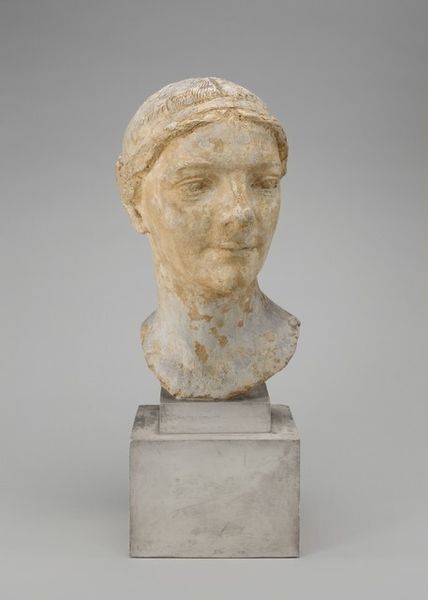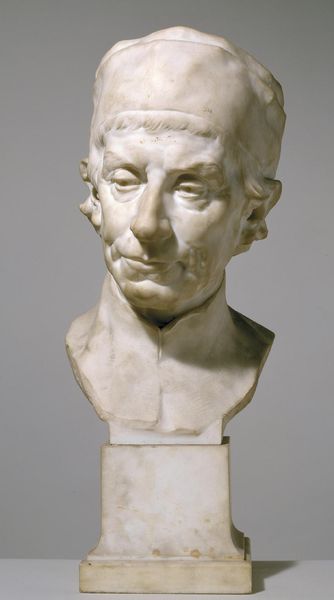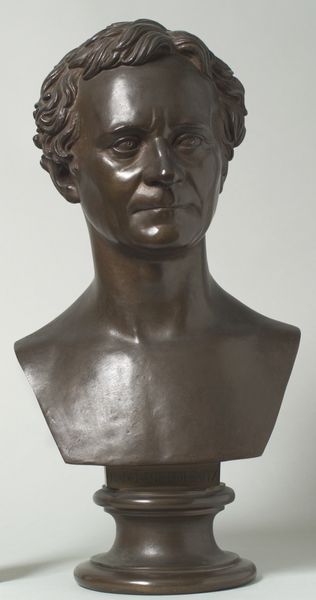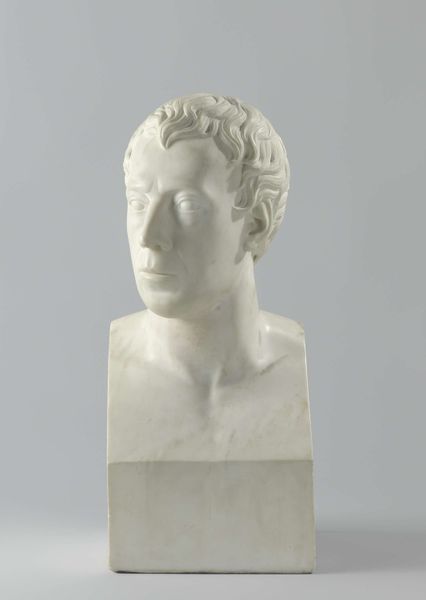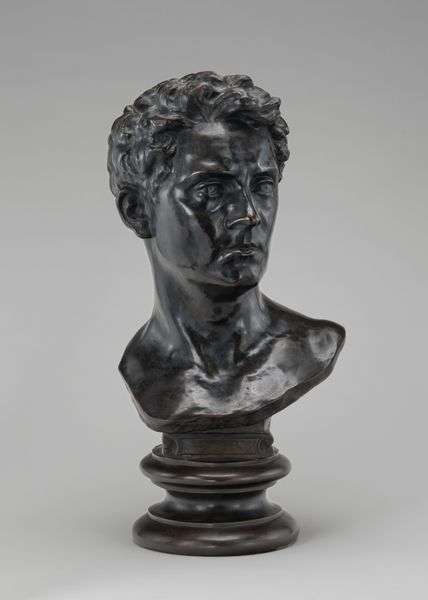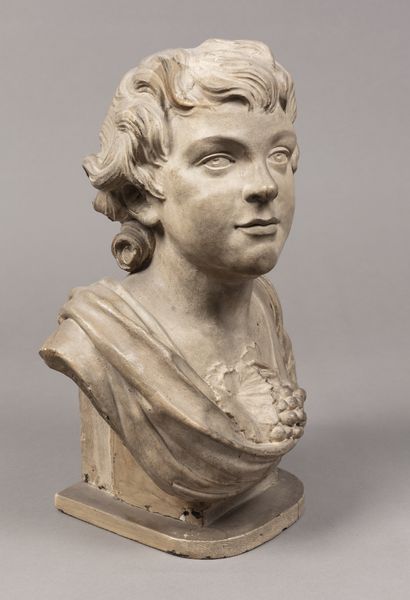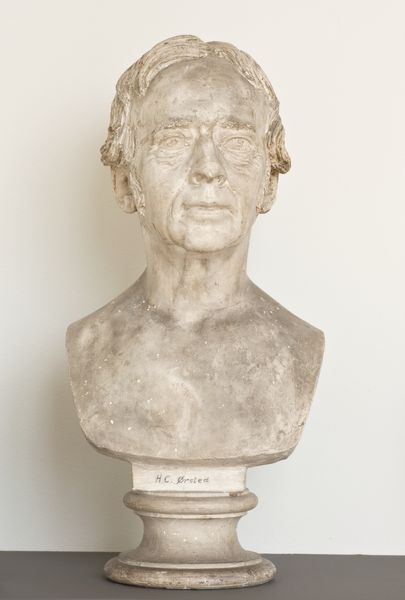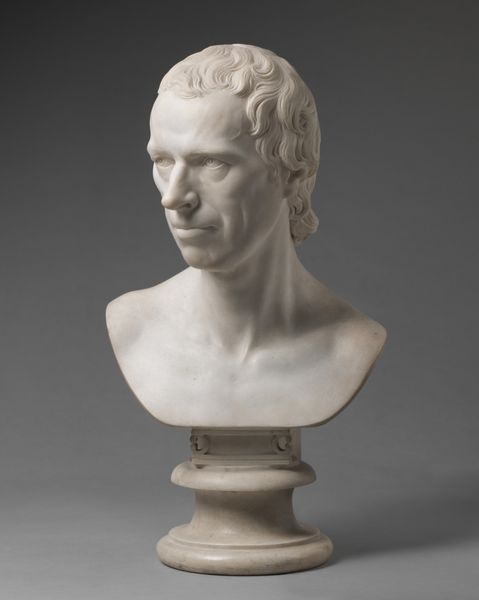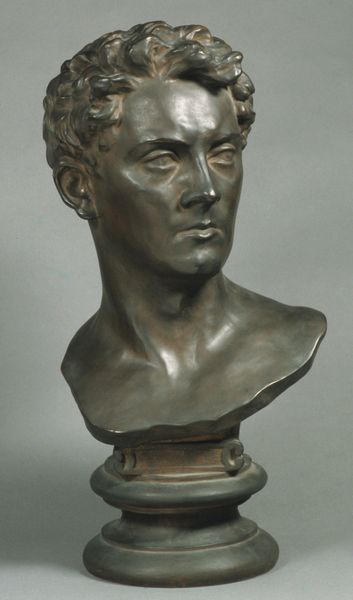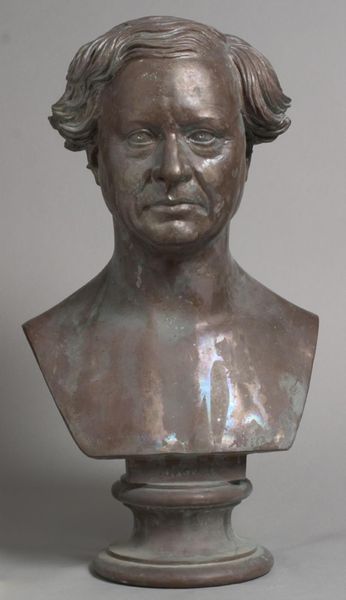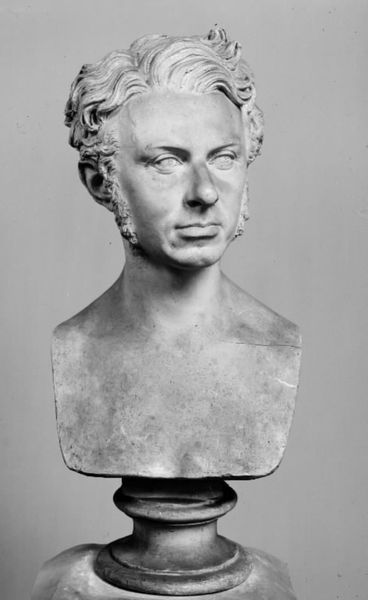
Dimensions: 71 cm (height) (Netto)
Curator: Here we have H.W. Bissen's sculpture of "Digteren Jens Baggesen," dating from 1863-1864. Editor: It possesses such a restrained and introspective quality, doesn't it? The cool, pale surface, the controlled curls… Curator: Absolutely. It's neoclassical in style, a testament to Bissen's dedication to classical realism. One can see the influence of the clean lines and idealized forms of antiquity. Originally made in plaster, though many marble versions exist, its production and the social context of portraiture in the 19th century are really crucial to appreciating this work. Portrait commissions solidified an artist’s reputation. Editor: Indeed, this reminds us how portraiture has long been a dialogue between visibility and memory. The meticulous rendering captures Baggesen’s likeness, but what about his character? How does Bissen use established symbolic codes? The tight, almost grim, set of his jaw seems like an intentional indicator of Baggesen's later years, fraught with mental illness. Curator: I'm curious about that too. Plaster itself is an interesting medium – readily accessible and easy to manipulate but ultimately, considered less precious than marble, therefore maybe communicating different levels of meaning contingent to value and class structures of the time? Was it simply more cost effective, given the demand for such pieces among a burgeoning middle class with a patriotic desire to monumentalize their cultural heroes? Editor: A fascinating question! I'm drawn to the way his gaze avoids direct engagement. What does this suggest about Baggesen’s reputation and inner world at the time? The Romantic poets grappled a lot with alienation from an increasingly industrial and secular society, which I think comes through. Curator: Well, certainly, Bissen's studio relied on multiple artisans to create these sculptures, indicating division of labor typical for its time. These kinds of details should provoke discussions about production and challenge the singular attribution of artistic genius that traditionally prevails, no? Editor: An important aspect of studying Neoclassical works! For me, it brings into focus the continuing relevance of Jens Baggesen as an emblem, though tinged with melancholy and psychological depth. Curator: Agreed. Seeing it through a lens of materiality adds a layer of complexity, reminding us of art’s connection to industrial advancements and to its economic impact at a time of burgeoning cultural identity. Editor: Precisely. The image then is laden with even greater cultural significance, an echo resonating even now.
Comments
No comments
Be the first to comment and join the conversation on the ultimate creative platform.


